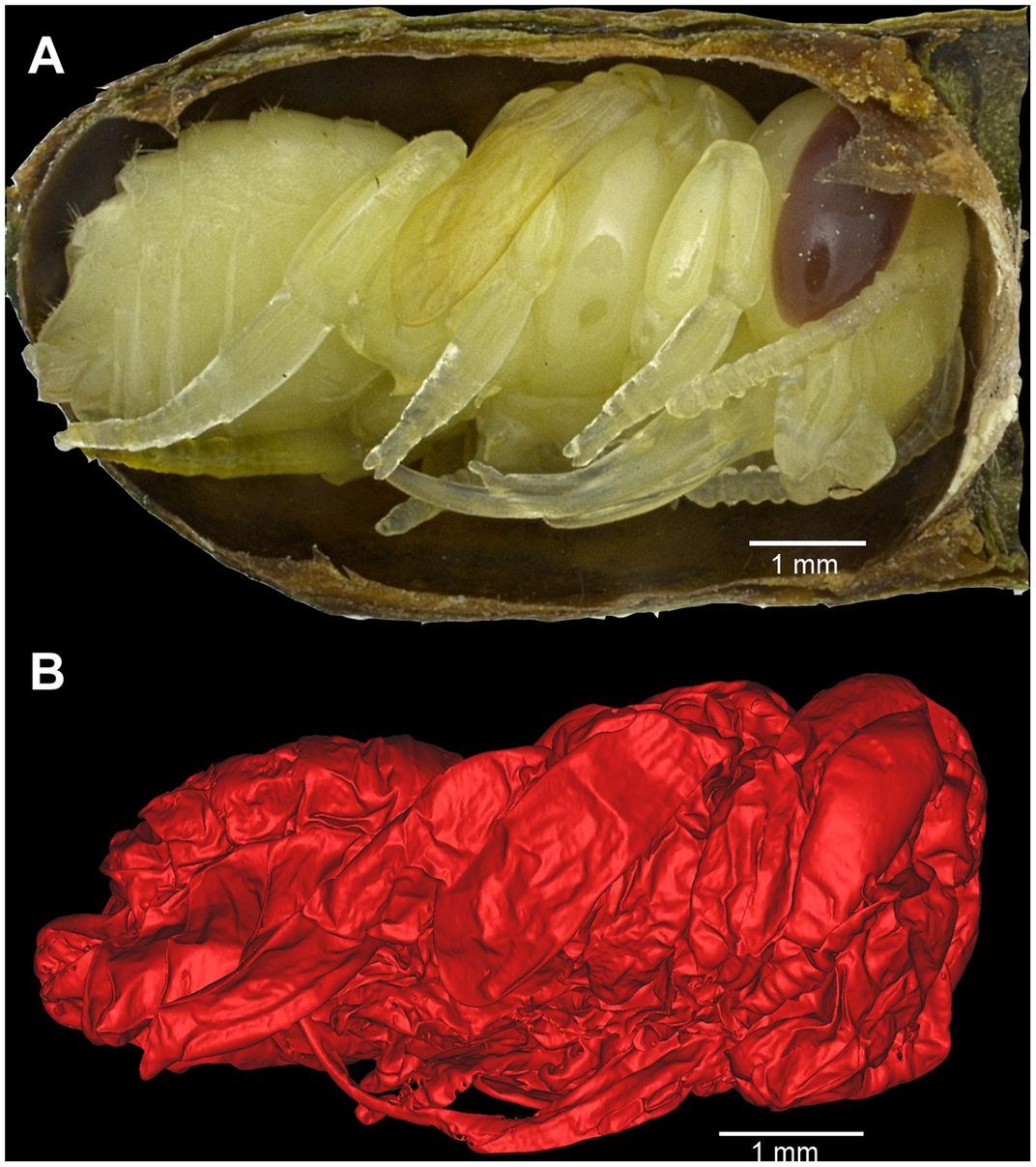Ice-Age Bees Uncovered at the La Brea Tar Pits
The samples were actually excavated back in 1970, but were set aside because there wasn’t a way to analyze them at the time
:focal(1548x615:1549x616)/https://tf-cmsv2-smithsonianmag-media.s3.amazonaws.com/filer/e9/a9/e9a91552-240e-490a-a87d-72c9460c0f11/journalpone0094724g001.png)
Los Angeles' La Brea tar pits have coughed up massive animals, from saber-toothed tigers to mammoths. But this discovery is much smaller—tiny bee pupae, still wrapped up in the leaves they use as a nest.
The samples were actually excavated all the way back in 1970. But at the time there wasn't a way to analyze the sample without destroying them, so they were set aside. But now, the tiny pupae can be seen with a micro-CT scanner. Just take a look:

The researchers say that the cells are so well preserved that they were probably assembled in the exact place they were found—rather than moved around by time. Using the micro-CT scanner, the team was able to create a 3-D model of the pupae made of 2,172 scanned slices.
These bees are between 23,000 and 40,000 years old, according to radiocarbon dating. They are probably a species called Megiachile gentiles, a species of bee that’s actually still alive today. And, the researchers say, this bee is one of the rare species that's probably benefitting from climate change, having expanded its range since the last ice age all across the United States.
/https://tf-cmsv2-smithsonianmag-media.s3.amazonaws.com/accounts/headshot/Rose-Eveleth-240.jpg)
/https://tf-cmsv2-smithsonianmag-media.s3.amazonaws.com/accounts/headshot/Rose-Eveleth-240.jpg)